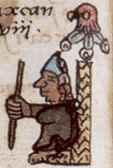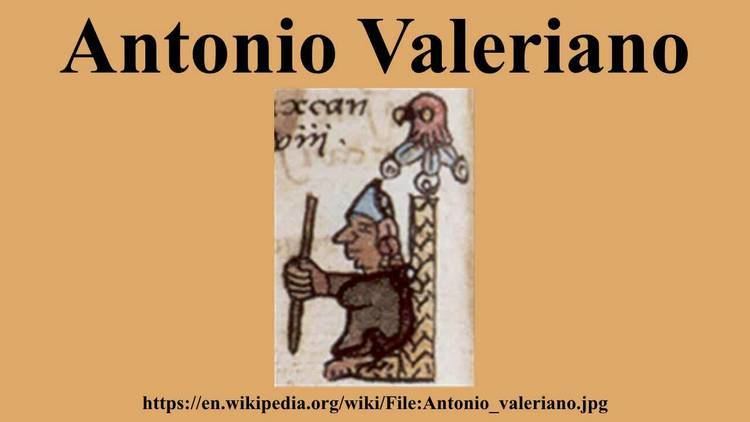Preceded by Francisco Jimenez Role Politician Name Antonio Valeriano | Nationality Novohispanic Succeeded by Geronimo Lopez Died 1605 | |
 | ||
Jos antonio valeriano campinas brasil descubriendo nuevos agentes bioactivos
Antonio Valeriano (ca. 1521–1605) was a colonial Mexican, Nahua scholar and politician. He was a collaborator with fray Bernardino de Sahagún in the creation of the twelve-volume General History of the Things of New Spain, the Florentine Codex, He served as judge-governor of both his home, Azcapotzalco, and of Tenochtitlan, in Spanish colonial New Spain.
Contents
- Jos antonio valeriano campinas brasil descubriendo nuevos agentes bioactivos
- Del Nicn Mopohua relato del escritos indgena del siglo diecisis don Antonio Valeriano
- Career
- Question of authorship of the Nican Mopohua
- References

Del Nicán Mopohua, relato del escritos indígena del siglo dieciséis don Antonio Valeriano
Career
Antonio de Valeriano was the most accomplished pupil and then native scholar at the Franciscan Colegio de Santa Cruz de Tlatelolco. As with other students at the colegio, Valeriano was taught literacy in Nahuatl, Spanish, and Latin. Bernardino de Sahagún singled out Valeriano as "one of my collaborators ... collegians expert in grammar. The principal and most learned of them was Antonio de Valeriano of Atzcapoltzalco." He was also praised by Franciscan Fray Juan Bautista, who preserved the last letter that Valeriano wrote him in Latin. Valeriano says that "my hands are trembling, my eyes are clouded, and my ears closed" [manus namque vacillant, oculi calignant, et aures occlusae] and signing as "Your most loving, but unworthy, Antonius Valerianus" [Tui amantissimus etsi indignus. Antonius Valerianus].
Valeriano and other pupils and former pupils of the colegio are to be credited with their collaboration with the Franciscans in creating religious texts, dictionaries, and other texts such as Sahagún's magnum opus of the General History of the Things of New Spain, the Florentine Codex.
Question of authorship of the Nican Mopohua
The question of Valeriano's authorship of the Nahuatl text known as Nican Mopohua has become a point of contention in the long-running dispute over the historicity of the apparitions of the Virgin Mary (under the title Our Lady of Guadalupe) to Juan Diego in 1531. The Nican Mopohua was published in 1649 by Luis Lasso de la Vega as part of a composite text known from its opening words as the Huei tlamahuiçoltica, and de la Vega's claims of authorship in the preface to that work notwithstanding, the Nican Mopohua has long been attributed to Valeriano. This attribution is based on a tradition dating back to the Informaciones Jurídicas de 1666 and the assertions of Luis Becerra Tanco and, subsequently, Don Carlos de Sigüenza y Góngora as to Valeriano's authorship and as to their acquaintance with the relative manuscripts in his hand-writing.
Suggestions have been made that its content is incompatible with someone (such as Valeriano) who had close bonds with the Franciscans, and others have suggested that the Huei tlamahuiçoltica is a unitary work which – despite the considerable objections against such a possibility – de la Vega wrote, with the assistance of a collaborator. Nevertheless, the general consensus among Mexican scholars (ecclesiastical and secular) remains that Valeriano is indeed the author of the Nican Mopohua.
